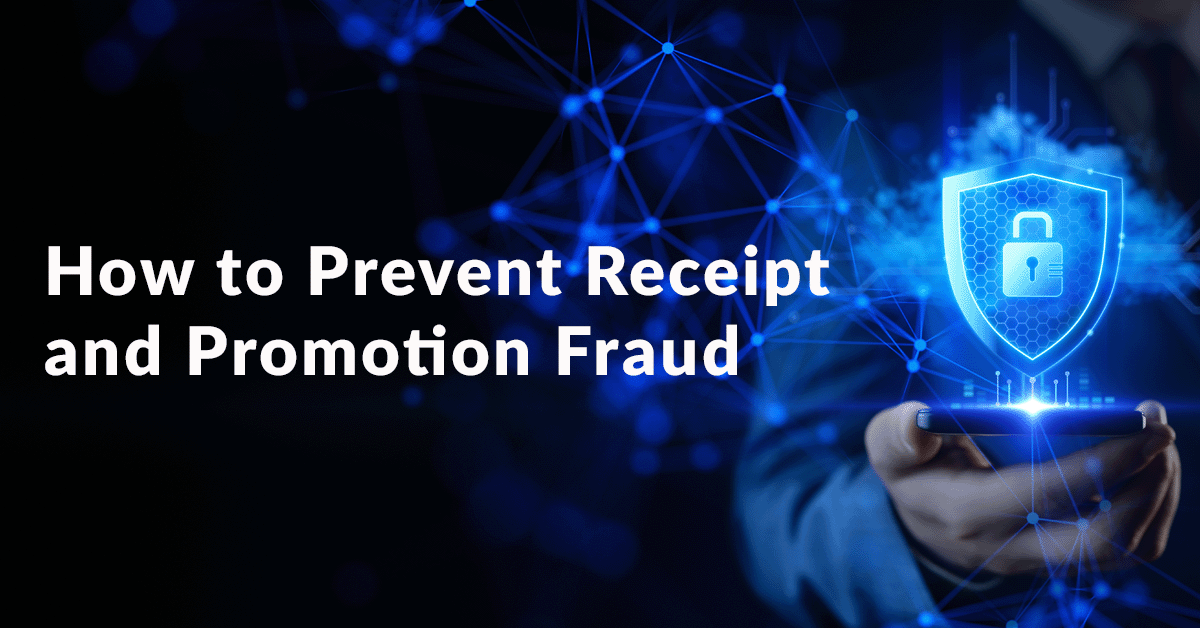Data analysis skills are as important to marketers today as any marketing skills. Data has become the fuel of marketing success, and everyone talks about how best to get their hands on it. But once you’ve got it, what do you do with it?
This is a question many marketers struggle with. So, they end up with gigabytes of data that doesn't influence strategic decision-making. Their fuel isn't powering their marketing engine. One of the top reasons for this is that the analysis doesn’t present a clear recommendation. You need to know what to do with your data to extract actionable insights.
Customer engagement data is just one of many data sets marketers look at. But it’s one of the most important. So, let’s explore the types of customer data, key data points to capture, and how to use customer engagement data to help improve the metrics that matter.
Types of Customer Engagement Data
There are four types of customer data. Customer engagement data is typically zero- and first-party because it’s captured when a customer interacts directly with a brand.
First-Party Data
Data from your audience. You passively collect first-party data via your brand's properties – social media, point-of-sale, website/app visitors, and data that aggregates into your CRM. Customers implicitly provide consent to first-party data collection as they directly engage with a brand.
Zero-Party (Explicit) Data
Data your customer proactively shares. Zero-party data is anything a customer intentionally and proactively shares with a brand. It can include delivery preferences, purchase intentions, personal context, or how the customer wants the brand to recognize them. This data is especially valuable because it requires a customer to trust a brand enough to provide specific and personal data.
The more zero-party data you acquire, the richer and more contextual your dataset becomes. This can allow you to create highly personalized and emotionally engaging customer experiences.
14 Key Customer Engagement Data Points to Capture
- Website traffic. In most cases, more website traffic means more opportunities and customers. But the degree to which this is true is determined by the relevance and quality of that traffic.
- Site visit frequency. While tricky to benchmark, once you’ve determined your ideal visit frequency rate, you can track this metric and use it to find trends in your customer’s activity.
- Pageviews. This measures the amount of traffic to the pages on your website. It counts every initial load, reload, or revisit to a page from the same visitor in the same session.
- Time on-page. Also known as “linger time” this metric indicates which products/information/content is most valuable to your customers.
- Downloads/form submissions. A key metric for digital customer engagement to identify sales opportunities and your most engaging content.
- Churn rate. Apps and many SaaS products that work on subscription-based models know the value of churn. Combine this metric with client feedback to improve customer engagement.
- Email opening times. Don’t rely on established wisdom to know when to send a marketing email. Use your customers’ engagement with your emails to optimize your strategy.
- Email Click-through rate (CTR). This customer engagement metric allows you to measure the success of your email campaigns.
- Social media engagement. Interactions on social media are an essential part of any customer relationship. They’re a great way to stay connected and build brand awareness.
- Time of call/visit. When you understand when and where your brand fits into the lives of your customers, you can personalize their experience further.
- Product/feature preference. This customer engagement metric allows you to create effective promotions and even develop new products.
- Stickiness. Stickiness measures how happy your customers are with your brand and how likely they are to continue engaging with it. Retaining satisfied customers who like your brand makes it easier to upsell premium services or products.
- Offer redemptions. One of the key metrics of customer engagement for many product marketing campaigns. Promotions, Loyalty Programs and shopper marketing advertising channels like Payments Media Networks offer a wealth of data from engaged shoppers.
- Customer satisfaction. This essential metric shows you the effectiveness of your customer engagement activities.
How to Use Customer Engagement Data
Organizations that leverage customer behavioral insights outperform peers by 85% in sales growth and more than 25% in gross margin. Customer data offers the most powerful opportunities for brands to improve customer experience and marketing returns. Here are just six examples of how to measure customer engagement and use the data to improve marketing strategies.
1. Improve Customer Engagement Strategies
Customer engagement data gives you the justification you need to improve any customer engagement marketing campaign or strategy. It provides a solid foundation the “that’s how we’ve always done it” mindset simply doesn’t have. Segmentation through customer engagement data makes it easy to A/B test ads, website experiences, and promotions to specific groups to get a clear picture of what works and what doesn’t.
Optimizing your strategy improves marketing ROI and drives sales. You can improve your strategies in a variety of ways, including:
- Matching your messaging with your customers’ interests
- Identifying your VIP customers and treating them with exclusives
- Engaging customers on their preferred channel
See also these 4 Customer Engagement Strategy Examples here.
2. Create & Segment Customer Profiles
From the moment a customer engages with your brand, they leave nuggets of information about their habits, preferences, and buying behavior. Use these initial data points to build customer profiles for retargeting and new campaigns.
Already got a customer profile? Make sure it’s up to date. People’s circumstances change all the time, so use this data to keep your profiles as accurate as possible.
Snipp Tip: Customers are unique, so treat them as such. Detailed customer profiles help you dig into exactly what your customers are looking for and how best to serve their interests.
3. Predict Patterns Among Customers
Customer engagement data allows you to forecast future customer behavior.
For example, your data tells you that a visit to the product page on your website is a strong sign of intent. An effective campaign based around this pattern of behavior could include sending triggered emails based on specific actions taken on that page.
Further to this, if you know that customers buy your products in a certain way at certain times (one beer on a Thursday lunch break, but a sixpack on the weekend), you can build promotional campaigns that will reliably deliver value.
Before you know it, you have a strong marketing and remarketing engine that’s based on the actions of the people that matter most to your business – your customers.
You can also use pattern data to direct marketing spend. For example, by reviewing customer-buying histories, behavioral data, and surveys, it’s possible to understand the typical purchasing path to your highest-value items. With this information in hand, you can redirect your marketing budget to favor the channels and methods that best support the ideal customer journey.
4. Build Personalized Experiences
Email segmentation is a classic example of a customized experience. It produces relevant and valuable messages that your recipients are more likely to read and respond to. Email segmentation helps you to take your messages from an email blast “one-to-many” approach to more of a “one-to-one,” personalized communication.
Knowledge of a customer’s interests and preferred content types allows you to personalize the experience further. Using smart content and other martech innovations, you can ensure every customer gets an experience they resonate with.
We know that customers are 110% more likely to add additional items to their baskets and 40% more likely to spend more than they had planned if the shopping experience was highly personalized.
But personalization goes further than smart content and segmentation.
When you have a clear understanding of how and when your customers prefer to interact with your brand, you can develop experiences that have a powerful emotional impact.
Why? Because being rewarded for doing something that you already believe is the right thing to do is a very reassuring feeling.
So, if you know when a customer is likely to buy from you and create small, but powerful, well-timed promotions, you reward the customer for their natural behavior. This helps the customer form a strong affinity for your brand because they feel understood at a deeper level.
Look to Grammarly for a great example of this. Every week, Grammarly makes use of all the data it collects from its customers to deliver weekly analytics reports of their writing technique. End-users can see how their writing has progressed and pinpoint areas where they still need to improve.
But the real function of these reports is to show users how valuable the app is to them, establishing it as a vital tool for content creators, writers, or people worried about silly typos in their emails. It also acts as an upselling strategy, that reminds customers that they’ll get even deeper insights and fix more problems if they upgrade to a paid account.
Snipp Tip: Make sure your personalization efforts go beyond purchase with rewards and incentives to rewards engagement activities so you can encourage recurring buying cycle behavior.
5. Identify and Re-Engage Lapsed Customers
Opens, views, clicks, and visits are key metrics for measuring success. But the negative results can be just as useful. When your data reveals non-activity indicators from a customer, you know when it's time to act.
Use that data to build a re-engagement campaign to reach out more gently and remind your customer that you’re still here for them.
- Create rewards that people really want
- Layer incentives and promotions for maximum impact
For example, Not On The High Street provides unique gifts you won't find anywhere else. But gift purchasers tend to only buy annually. To re-engage lapsed customers, they have dedicated email campaigns with tempting discounts to entice customers back into the fold.
6. Spot New Opportunities
Get creative with your customer engagement data. If you know that your customer has just purchased their 50th beverage from you or has used a specific feature of your SaaS product 100 times, tell them.
Campaigns that highlight how customers have interacted with your products and services are a fun way to keep people engaged. Spotify’s Wrapped is a perfect example of this type of campaign and it only works because the content is data.
Alternatively, if you see a lot of customers focusing on a specific aspect of your product, there’s an opportunity to create a content campaign around it. If your customer survey data indicates a trend toward certain tastes and styles, maybe there’s a new product opportunity for you.
If people are spending a long time bouncing around the Help & Support section of your website, consider that an opportunity to improve that area of your website.
You never know what innovations you might find in your customer engagement data, so take the time to dive deep and find new ways to join the dots.
Great Marketing Requires Great Data
Marketing has always relied on data to identify the opportunities that make brands iconic. And thanks to technology, we now have access to more data than ever.
Brands and retailers need the right tools and processes in place to collect information across all touchpoints, identify purchase patterns on all channels, and analyze huge volumes of complex customer engagement data to extract actionable insights. Only then can you effectively segment and personalize your marketing efforts to surprise and delight customers – which can make all the difference.






